- Home
- Michael McDowell
The Amulet Page 2
The Amulet Read online
Page 2
He was on his feet again, and reeled blindly into a group of men who had watched all this in shocked immobility. They scattered as he fell over into their midst.
Chapter 1
Pine Cone, Alabama, is located on the western edge of the Wiregrass region, tantalizingly near the border of the pine barrens, which are more lonely perhaps, but infinitely more profitable. Another town had been settled in the same spot about 1820, and called by another name that no one remembers, but it was burned down by three Union soldiers, not because it was a rebel stronghold, but because they were drunk. It was not built up again until late in the nineteenth century, and no one knows why.
The town is not on a railroad line, and in fact, after the munitions factory became a place of importance to military leaders, it was necessary to build a spur from the L&N tracks, which run about ten miles east of Pine Cone. Burnt Corn Creek, which meanders through the town and much of the adjoining countryside, is not navigable, even by Boy Scouts in their canoes, who for boating exercise must go many miles south to the junction of Burnt Corn with Murder Creek. (Both were named after certain common practices of settlers in an earlier period of Alabama history.) The water is filled with rapids, and interrupted by trees that fall across the breadth of the narrow watercourse after every heavy rain. It is not even good for swimming, for the margins of the river breed leeches and water moccasins in staggering numbers.
Nor is Pine Cone the center of extensive farming lands. The tracts and small farms around produce few substantial cash crops, though cotton, peanuts, soy, potatoes, corn, and pecans are in moderate favor with farmers who, with pitiful regularity, fall one by one into insolvency and bankruptcy. Occasionally one of these hard-pressed men will relieve his financial troubles by suicide.
At one time there was a chenille mill in the town, but it folded during the Depression. Now there is the Pine Cone Munitions Factory, and that keeps the town going. Other than this, the principal industry of Pine Cone is said to be three crippled black women who spend their days constructing patchwork quilts which are sold in the North for fabulous sums.
The town is proud of its population of two thousand, and it might well be, since there is nothing to keep them there except stubborn civic pride, overwhelming inertia, or a perverse moral self-discipline bordering on masochism. Eleven churches minister to the needs of unregenerate souls in Pine Cone, and nearly two dozen retail establishments vend articles that the inhabitants of the town may or may not require. There is a public library, not much used, which was set up and maintained by a spinster in the ’twenties. Now it is run by her first cousin once removed, also a spinster, and even nastier to the few children who go there than the first woman had been. The only building that survives from the burning of the town during the Civil War is the jail, a shell of a brick building, with bars on the front windows. It is now almost hidden by vines, and cannot boast of a roof. It is located on property belonging to the hard-shell Baptists, and is supposed to be haunted by the ghost of a slave who starved to death in it.
The police force is limited, but there is not much belligerent crime in Pine Cone, though it must be admitted that what there is, is usually of a violent and often fatal nature. The town has more murders than robberies. This is because most homicides arise out of quarrels among family and friends, and are crimes of passion. A robbery is cold-blooded, and the citizen of Pine Cone, though he will not hesitate to plunge a butcher knife into his wife’s heart when he discovers her in bed with his domino crony, is at heart a law-abiding man.
Sheriff Phelon Garrett has been head of the police force for twelve years; under him is Deputy Ray Barnes. Garrett is often heard to complain that Barnes has a bad aim and a thick head. Officer James Shirley is reliable, though he does not lead a happy domestic existence. Two more policemen spend the greatest part of their time on duty in a cafe near the train tracks which is known more for the friendliness of the two waitresses than for the quality of the food.
Downtown Pine Cone is three blocks of dilapidated storefronts, with the usual complement of a bank, a dime store, three clothing stores, a shoe store, a supermarket (part of the Piggly Wiggly chain), a smaller grocery, a movie theater (closed for thirteen years now), a store that distributes greeting cards and fundamentalist religious literature, two auto-parts supply stores, four gas stations, three restaurants, two 9-to-11 convenience stores, a furniture store, the city hall, and a gift shop that makes all its money on wedding gifts and graduation presents. This area is not so crowded that there is not space for a couple of vacant lots, grown up with weeds, where buildings have been burned and not rebuilt. A go-getting mayor some years back thought to upgrade the image of Pine Cone by putting in three sets of traffic lights in the three intersections in the commercial district. He was not reelected, largely because of this move, and his successor disconnected the lights, though they remain in place.
There is no motel or hotel, but a rooming house can be reached by sidling through the alley that runs between the bank and the more prosperous auto parts store. No one in Pine Cone has any idea what sort of people stop there, or indeed, even of who runs it. Traveling salesmen come only for the day, and stay in the towns to the south of Pine Cone: Andalusia, Opp, Florala—where there are bars.
The street that goes through the center of Pine Cone was optimistically christened Commercial Boulevard, and is distinguished by an archipelago of narrow, neglected traffic islands, which support occasional palm trees. These plants do well enough in the climate of Pine Cone, but would look much more at home a little farther to the south, in Florida. But during the week, shoppers on Commercial Boulevard are few, and all appear to have their cash in the pocket of the pants that are still hanging in the closet at home.
But the merchants, in a single flash of financial wizardry, conceived a scheme to draw great numbers of people to shop in Pine Cone. A ticket is given for each dollar’s worth of merchandise purchased in every store in the downtown area, and the customer fills out his name and address on the scrap of cardboard, and then deposits it in a great barrel that stands out in front of the city hall, in a specially constructed shelter which is locked up every night. Each Saturday afternoon at three o’clock, the drum is spun around by the head majorette of the county high school, and a ticket is drawn. The winner receives a few hundred dollars, and six months of congratulations and stale jokes and slant-eyed envy from his friends.
The scheme works. This drawing, as the lottery was called, was and continues to be an enormous success in the small rural town—in the entire county in fact—where gambling is something that people did in Nevada and on television and nowhere else. For the first time in their lives, the people of Pine Cone were being offered something for nothing. The town is mobbed all day on Saturday, so that it is difficult to drive a car those three blocks through the center of Pine Cone. Farmers and their wives and their eight children who before had gone to one of the larger towns nearby now come to Pine Cone, do their shopping, carefully (and laboriously) fill out the tickets, deposit them in the rusting drum, and desperately pray for the few hundred dollars that, in truth, would make a substantial difference in the quality of their lives for many months to come.
On Saturday morning, the stores are crowded with people who spend money with glad hearts, knowing that they may have the chance to make it all back in the afternoon. All day there is a line in front of the city hall, everyone in town sticking his few or many tickets through the narrow slot in the top of the barrel. Everyone likes to give it a “lucky” spin, in hopes that the motion will increase the chance that their own ticket will be pulled out by the pretty blond girl in the high white boots, and the gold tassels on her stovepipe hat.
The few hundred dollars would mean much to almost anyone living in Pine Cone, for it is not a prosperous community. The richest men in town are the two lawyers, the president of the bank, the dentist, the three general practitioners, and the chiropractor. The richest—the dentist
—makes in his best years, with half the eighth grade class going into braces, no more than thirty-two thousand dollars. Certain people stand to inherit money someday, but their kin are hanging stubbornly on to their sorry lives; others have wealthy relatives in other parts of the state, but a rich relative, everyone knows, has a tighter fist than a three-day-old corpse. And everyone, no matter his income, has the same trouble with mortgages and overdrafts.
The residential area that lies to the north of Commercial Boulevard can not exactly be called fashionable, but it is the most desirable area of the town. Here live the professionals, the store owners, and the schoolteachers. Factory workers live in less substantial housing south of Commercial Boulevard. The black section of Pine Cone is on the eastern edge of the town, geographically separated by Burnt Corn Creek. Here the people are often very poor indeed.
The oldest houses in Pine Cone stretch along the highway leading out of the town to the west: they are pleasant, well-constructed buildings, though not to the modern taste. The people who live in them are old, proud, impoverished, and not much thought about. The grammar school is located north of Commercial Boulevard; the junior high school to the south of it. Older students have to take the bus every day to the county high school in Elba. The munitions factory had been constructed just to the west of the town, but recently the town expanded its boundaries so as to include it. It is screened from the highway by heavily wooded vacant lots. Cheap housing for workers had been recently erected up to the parking lot of the plant, and for many people, the Pine Cone Munitions Factory, in the very corner of Pine Cone, is its center.
The people of Pine Cone recognize one principal division of themselves: black and white. Other divisions can be seen, but they don’t matter as much. All the black people in the town, about thirty per cent of the population, are descended from slaves who had worked the plantations in the Black Belt, only a few miles to the north. Many of them bear the peculiar last names that facetious white masters had bestowed upon them at the time of their emancipation: Shakespeare and Hiawatha, and Canteloupe. Some of the black women are employed as maids, and some of the black men work at the plant. Other men and women are hired for seasonal work in the fields and some businesses are operated by blacks specifically for their own community, for there is still rigid segregation in many areas of commerce in the deepest portions of the South. The blacks live their own lives on the other side of Burnt Corn Creek.
The white people of Pine Cone are for the most part the great-grandsons and -daughters of the sharecroppers and petty landowners who tried, with no more success than their descendants, to work the soil of this region. The white inhabitants of Pine Cone are not overly educated, they are not overly refined, and they are not overly civil to one another. The community is so homogeneous it seems like an extended family, but it is a family that feuds with itself constantly. The Wiregrass is not a region that breeds tolerance or friendliness, and the more genial of human attributes seem to exist in that place by chance and neglect rather than by cultivation. Neighbors distrust one another as a matter of course, and a brother is very careful when he turns his back on his sister. “To give the benefit of the doubt” is a phrase that is not even understood, much less put into practice, in Pine Cone.
Religion is a great occupation in this part of the country, and there are many factions among the Presbyterians, Methodists, Baptists, Seventh-day Adventists, Congregationalists, and Church of Christ-ers. And many of these denominations are further split up: the Baptists, for instance, came in both the hard-shell and soft-shell variety. Hard-shell Baptists sing their hymns a capella, for they consider bringing a piano or an organ into a sanctuary is no better than turning it into a dance hall. They do not cross their legs, for that is thought to be a form of dancing, and dancing is a sinful abomination. Soft-shell Baptist women cross their legs, but leave the dancing to the Presbyterians and the Methodists and cheerfully damn them to hell for it. Three families of Catholics live in Pine Cone, all of them employed at the factory. Two of the families go every week for services in Andalusia; the third is apostate. There are no Jews in Pine Cone, and no one could be found who would admit to atheism.
Religion is often hard in Pine Cone but life is not particularly easy itself, and it gets appreciably sterner once you cross the city limits out into the countryside. Many people can see the cotton and peanut fields from their houses, and some plots are never situated within the boundaries of the town. People in the country live in unpainted wooden houses, still without indoor plumbing, with only fireplaces to heat them through the few bitter months of the southern winter. They haven’t a dollar to spare for any luxury. The school board had to rescind its order that no student come to school barefoot, when too many children from the country were being kept home because no shoes could be afforded.
Country people think that the inhabitants of Pine Cone are all rich and wicked, and perhaps by comparison, they are; but people in Pine Cone say that country people are meaner—and they may be right. In any case, the people who live in the country don’t like to go into town any more than is necessary, probably once a week for most of them. They have their own little establishments on the highways which serve their midweek needs admirably—Morris Emmons’ store, for instance, about five miles to the west of town. It is no bigger than the auto supply store in Pine Cone, but Morris Emmons sells gas and diesel fuel (at cheaper prices than in town), provides all manner of canned goods and fresh vegetables, long underwear, firearms, spinning tops, bed linen, certain tractor attachments, scratch feed, calico, domestic hardware, and fishing bait. And there is even a slaughterhouse in the back.
In the countryside surrounding it, and in Pine Cone itself, morality is rampant. When a boy playfully filched a pencil from his best friend, it was universally predicted that he would end up in the state penitentiary, if he recovered from the whipping that his father administered. And among adults, adultery is an unmentionable thing, which only occurs in the Bible and in Mobile. But this morality is that of the hard face: it is scandalous to mow your lawn on Sunday, for that shows disrespect for God, who likes long grass on the seventh day. On the other hand, it is perfectly natural—because it is legal by the laws of the United States—for the president of the bank to foreclose on a piece of property adjoining his own, so that he could purchase it for the price of a dead dog, tear down an old woman’s house, and build a swimming pool for himself. The old woman died in a nursing home in Andalusia before the pool could be filled with unchlorinated water.
But it could be said also that there is a great vitality in the mean-spiritedness of the town’s inhabitants. Sometimes they are creatively cruel to one another, and there were seasons in which Pine Cone was an exciting place to live—if you were a spectator, and not a victim.
Chapter 2
The Pine Cone Munitions Factory is made up of half a dozen large, single-story, clapboard buildings set on piles of concrete blocks. These unsightly structures were built during World War II for the emergency production of exploding shells. Pine Cone was selected for the location of this facility precisely because it was small, insignificant, and remote—though not so very far from the important base at Fort Rucca, then technically only a camp—and because a congressional representative from Alabama on the Armed Services Committee had a nephew who owned a tract of land in Pine Cone which, because it was good for nothing at all, screamed out to be purchased at a fabulous sum by the wartime government.
The plant during the war employed a great number of people, and these lucky ones, many of whom had not known employment since the beginning of the Depression, actually dreaded the end of the great conflict in Europe and the Pacific, because that would also mean the cessation of their weekly pay envelopes which, if not generous, were at least regular. They were right, for directly after Japan surrendered, the railway stopped bringing into Pine Cone the carloads of parts that had been so easily assembled into the bullet-shaped instruments of destr
uction. The people who worked at the factory were let go, and they wandered disconsolately about the town, making trouble late in the night, consuming great amounts of bootleg whiskey (an industry that was not affected by the end of World War II), and wondering what they were going to do next.
Unknown to them, however, the buildings had been sold privately, without bidding, and at a scandalously low sum, to the first cousin of the Alabama congressional representative who had got the plant located there in the first place. When questioned regarding the propriety of this, the Alabama congressman replied that the family had a sentimental attachment to the acres in Pine Cone, and wished to retain them in the family. He wasn’t sure, but he thought that his great-grandmother might be buried in the vicinity.
The machinery that had put together exploding shells was quickly converted for the assembly of a kind of rifle then much in favor with the army. Modifications, suggested by a Pentagon general who was rabid on the subject of repeating rifles, were incorporated and before long a large government contract had been awarded to the Pine Cone Munitions Factory, though as yet it had only its physical facilities as capital, half a dozen menial office workers, as many more incompetent executives, and no stock whatsoever. The workers were hired back as fast as they could sober up, and since that time the Pine Cone Munitions Factory has turned out many millions of firearms, which have been employed in training camps mostly, but also in Korea and, more recently, in Vietnam.
The factory employs nearly five hundred workers, a full quarter of Pine Cone’s population; that works out to a much heftier percentage of the town’s adult, ambulatory, sane population. The executives are hometown men who are not very bright, but can be trusted by the owners of the plant to do exactly what they are told. All the girls who go away to college or to vocational school can be sure to find a place in the offices of the plant when they return to Pine Cone to support their mothers, or wait on their fathers, or humor their husbands. They are secretaries and file clerks.

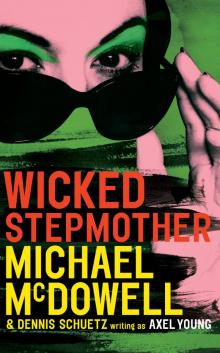 Wicked Stepmother
Wicked Stepmother Blackwater: The Complete Caskey Family Saga
Blackwater: The Complete Caskey Family Saga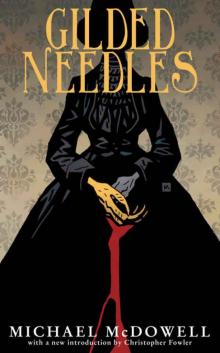 Gilded Needles (Valancourt 20th Century Classics)
Gilded Needles (Valancourt 20th Century Classics)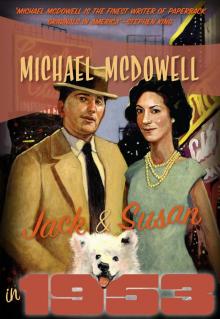 Jack and Susan in 1953
Jack and Susan in 1953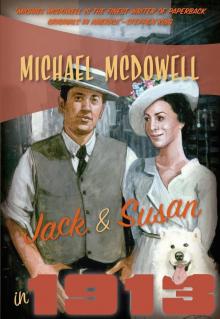 Jack and Susan in 1913
Jack and Susan in 1913 Rain
Rain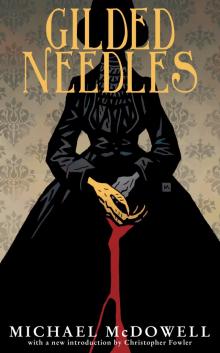 Gilded Needles
Gilded Needles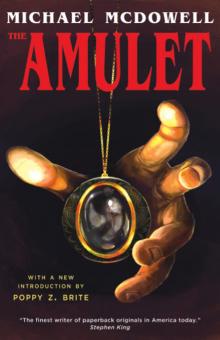 The Amulet
The Amulet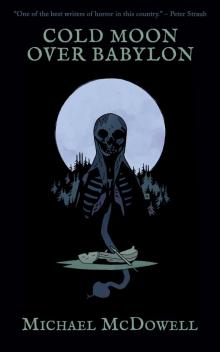 Cold moon over Babylon
Cold moon over Babylon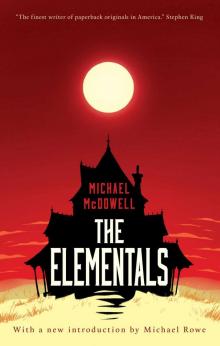 The Elementals
The Elementals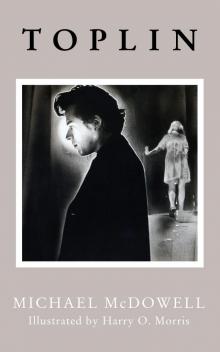 Toplin
Toplin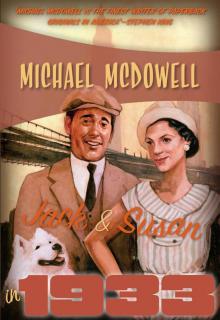 Jack and Susan in 1933
Jack and Susan in 1933 Katie
Katie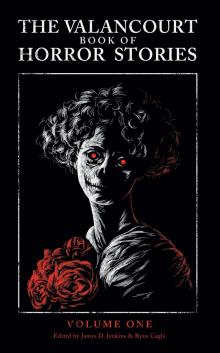 The Valancourt Book of Horror Stories
The Valancourt Book of Horror Stories